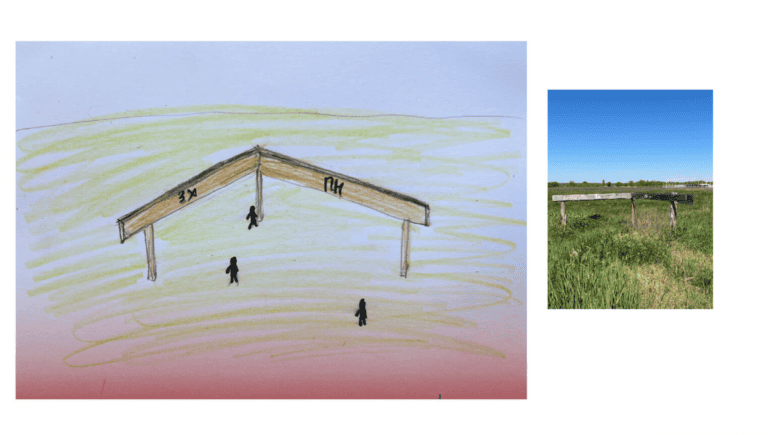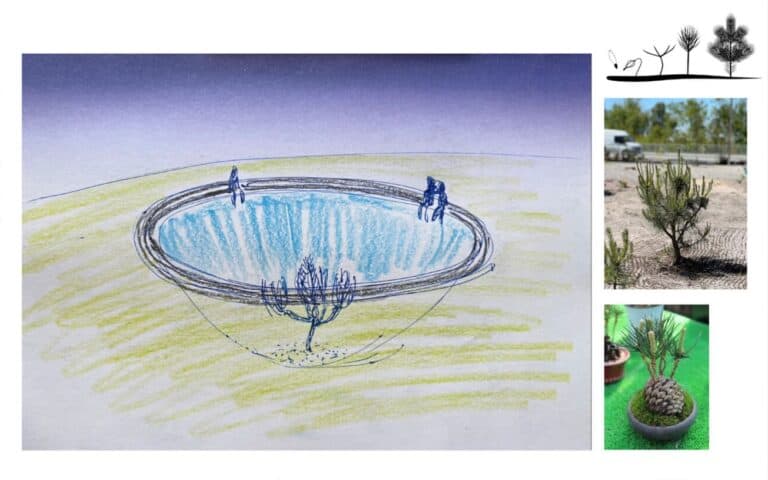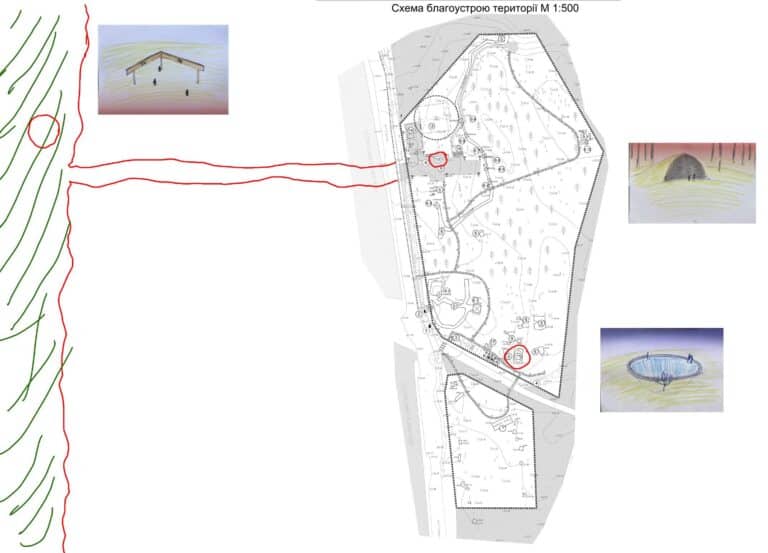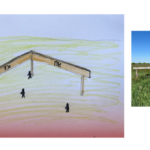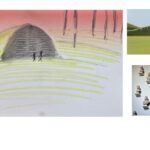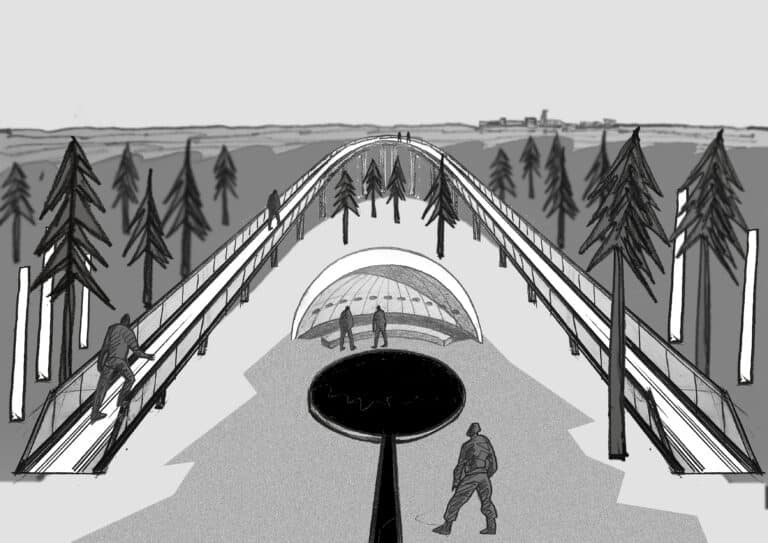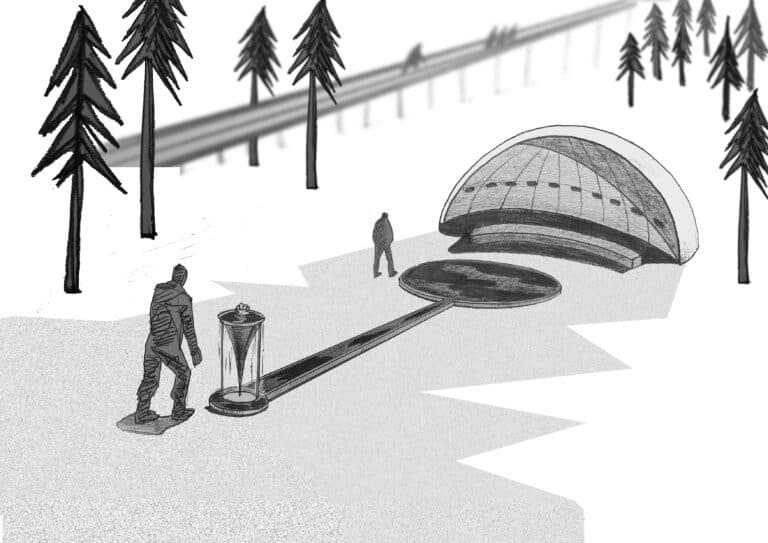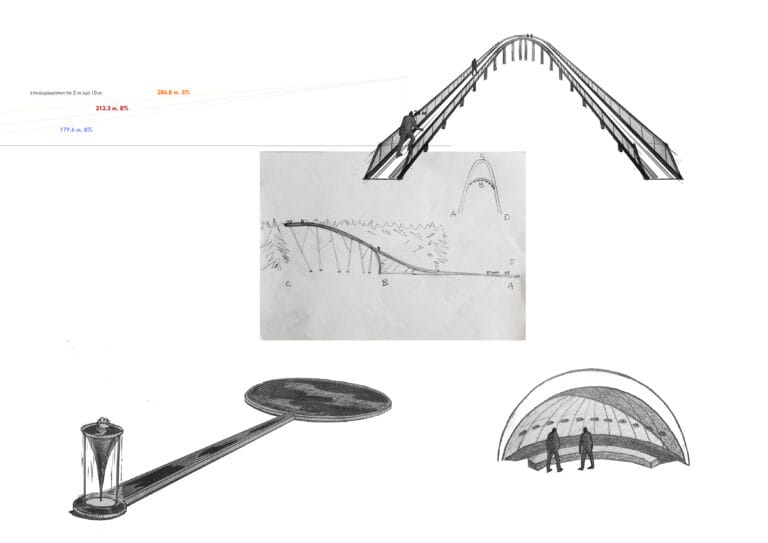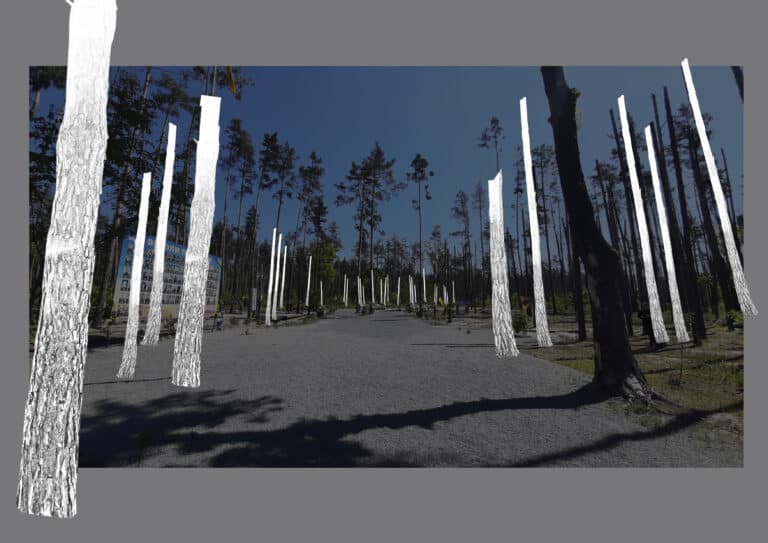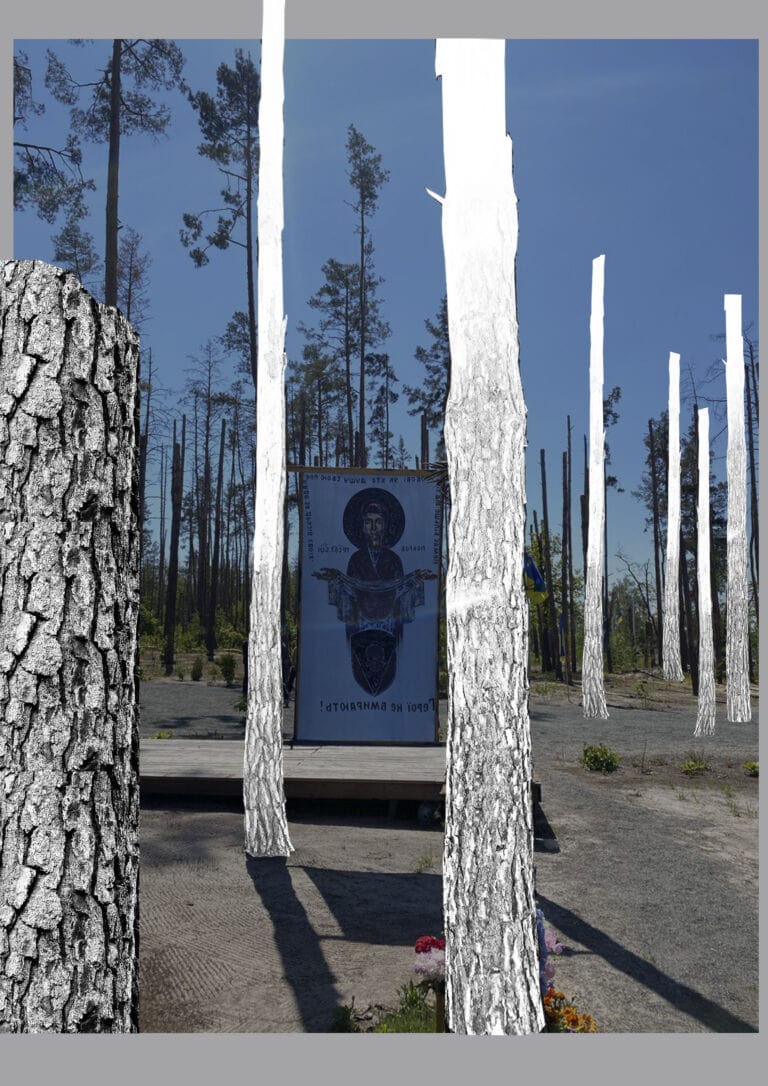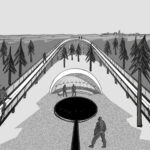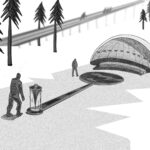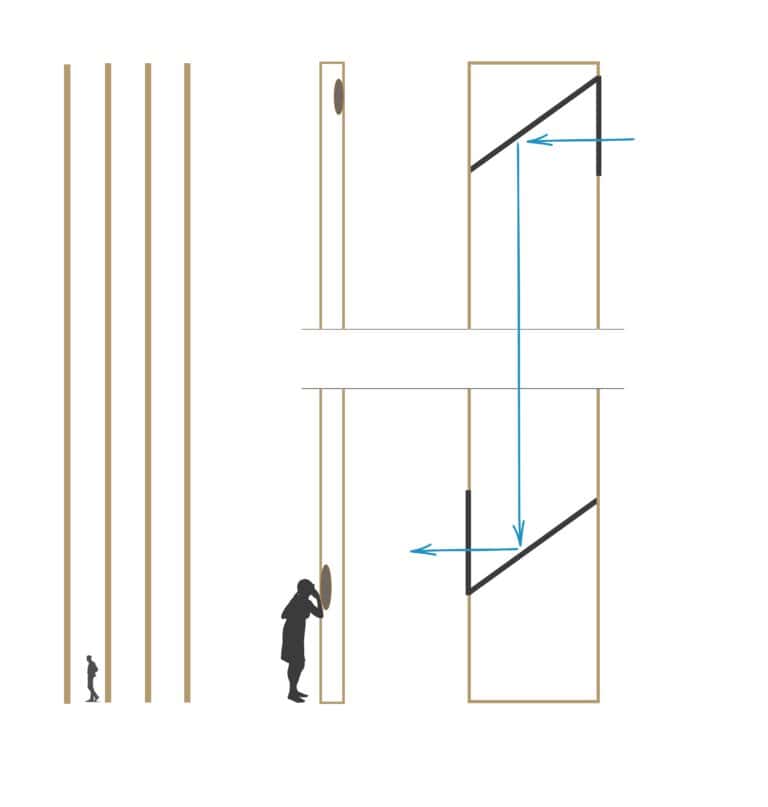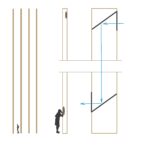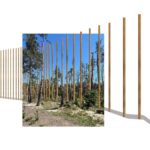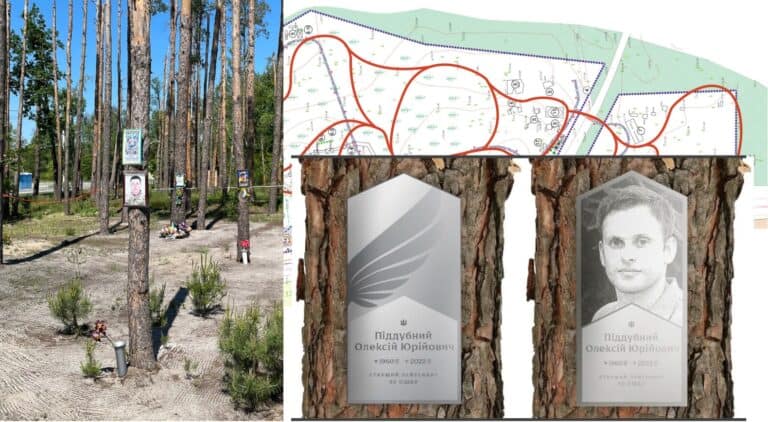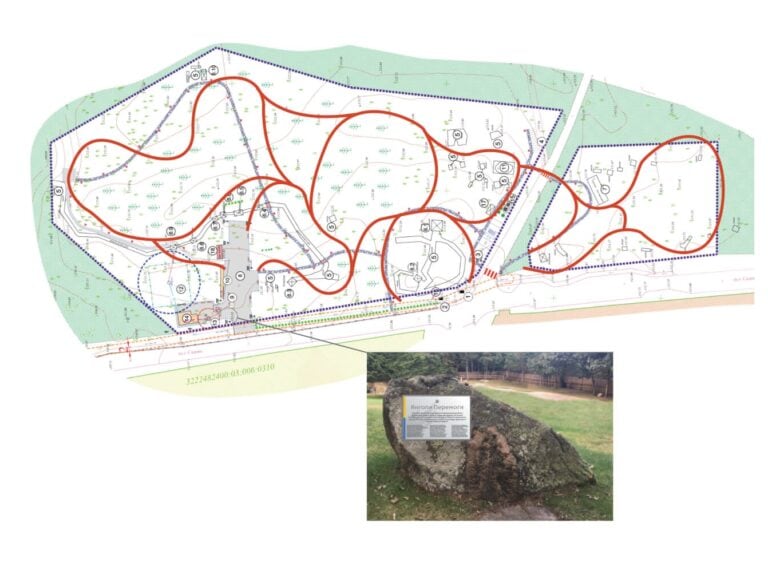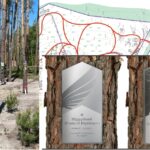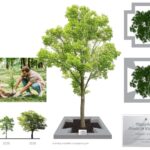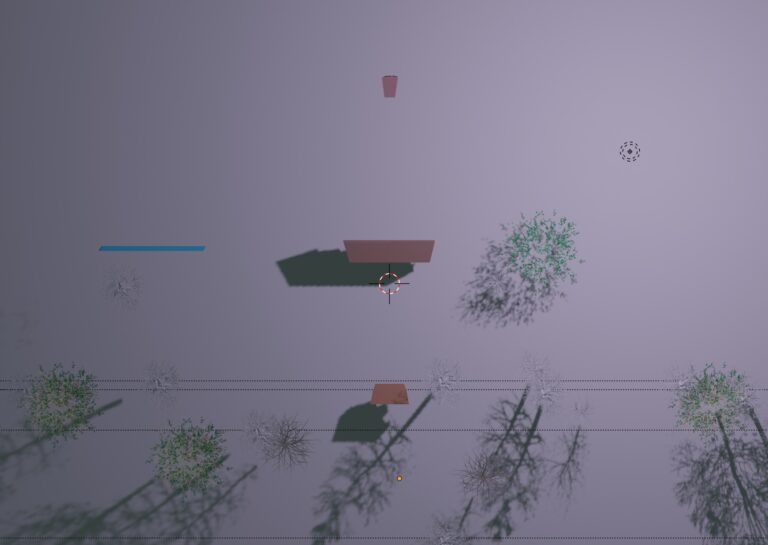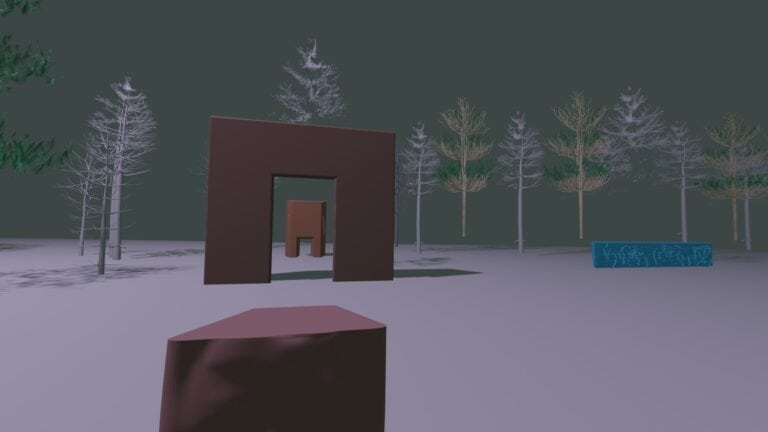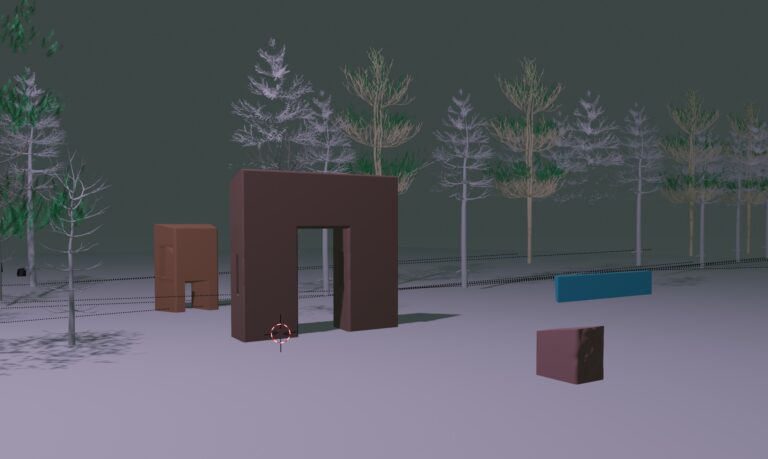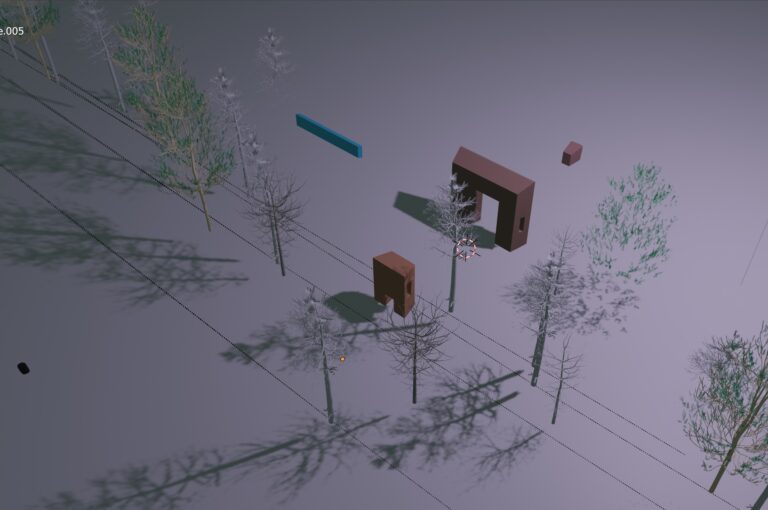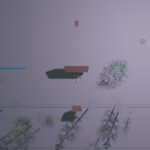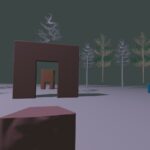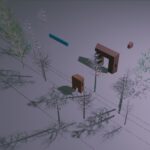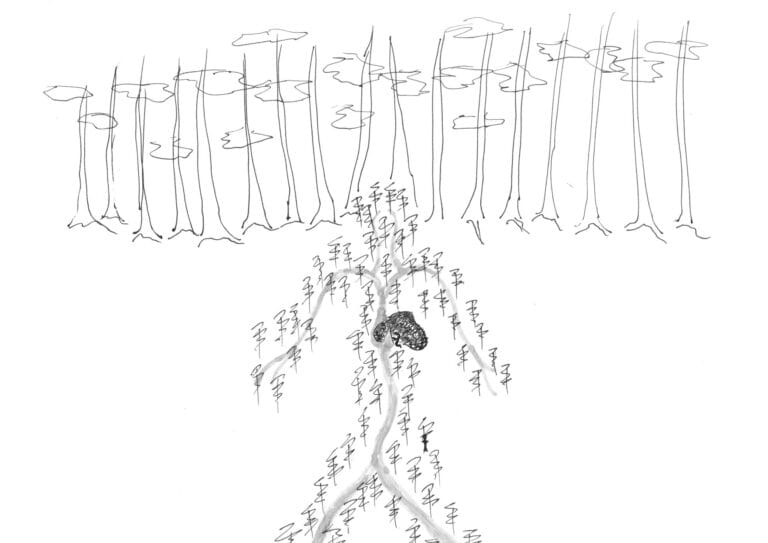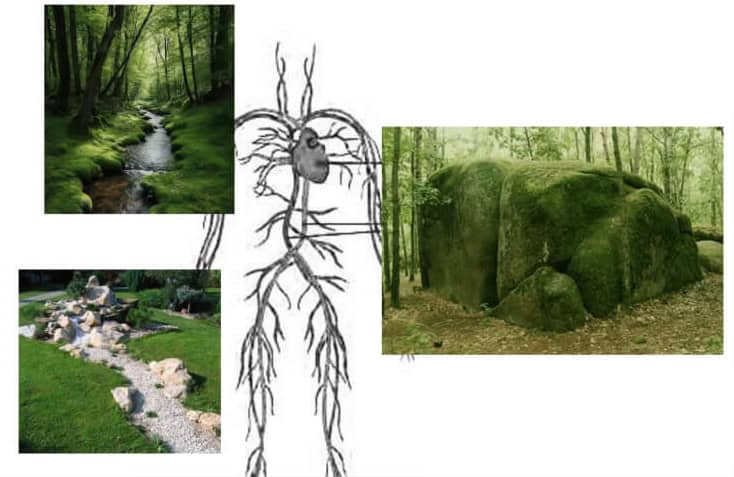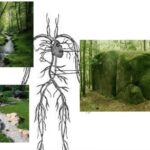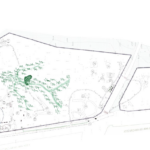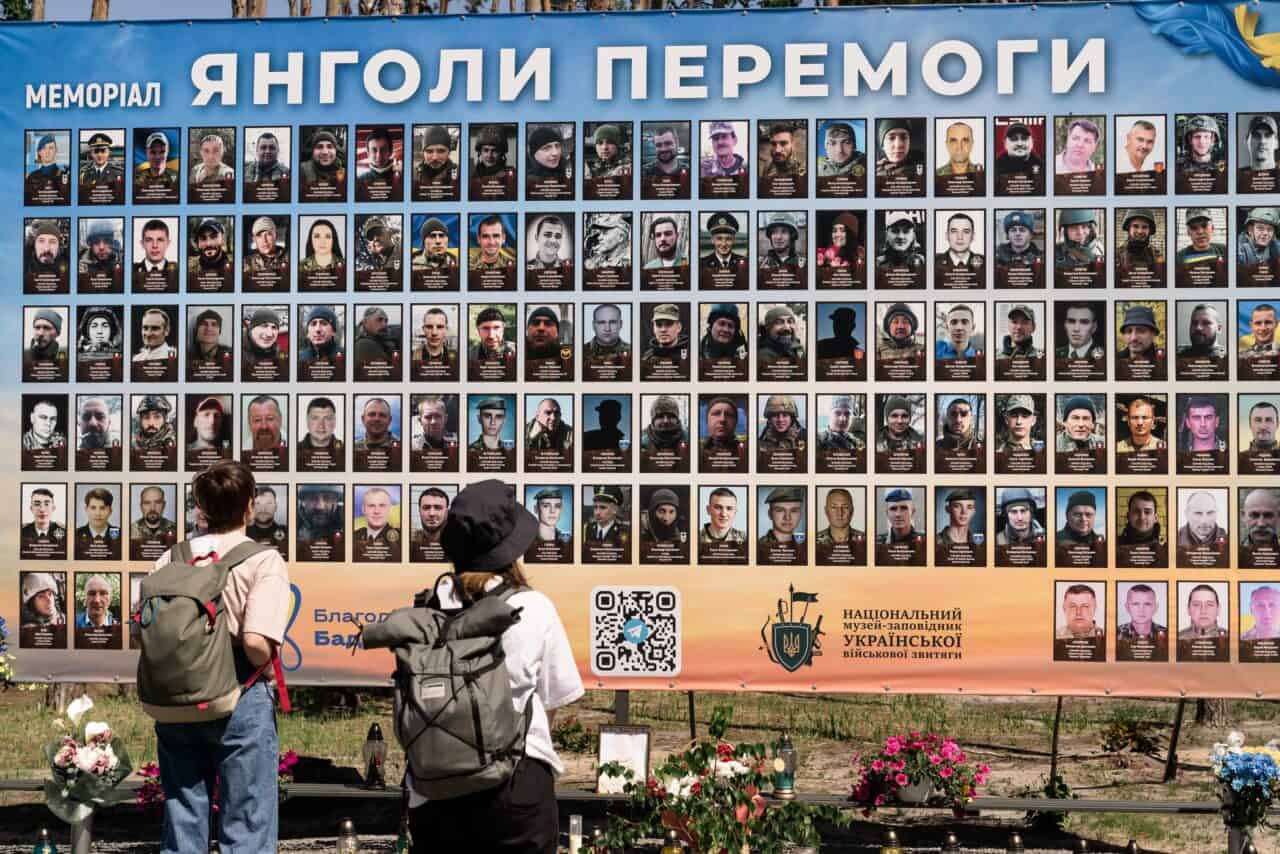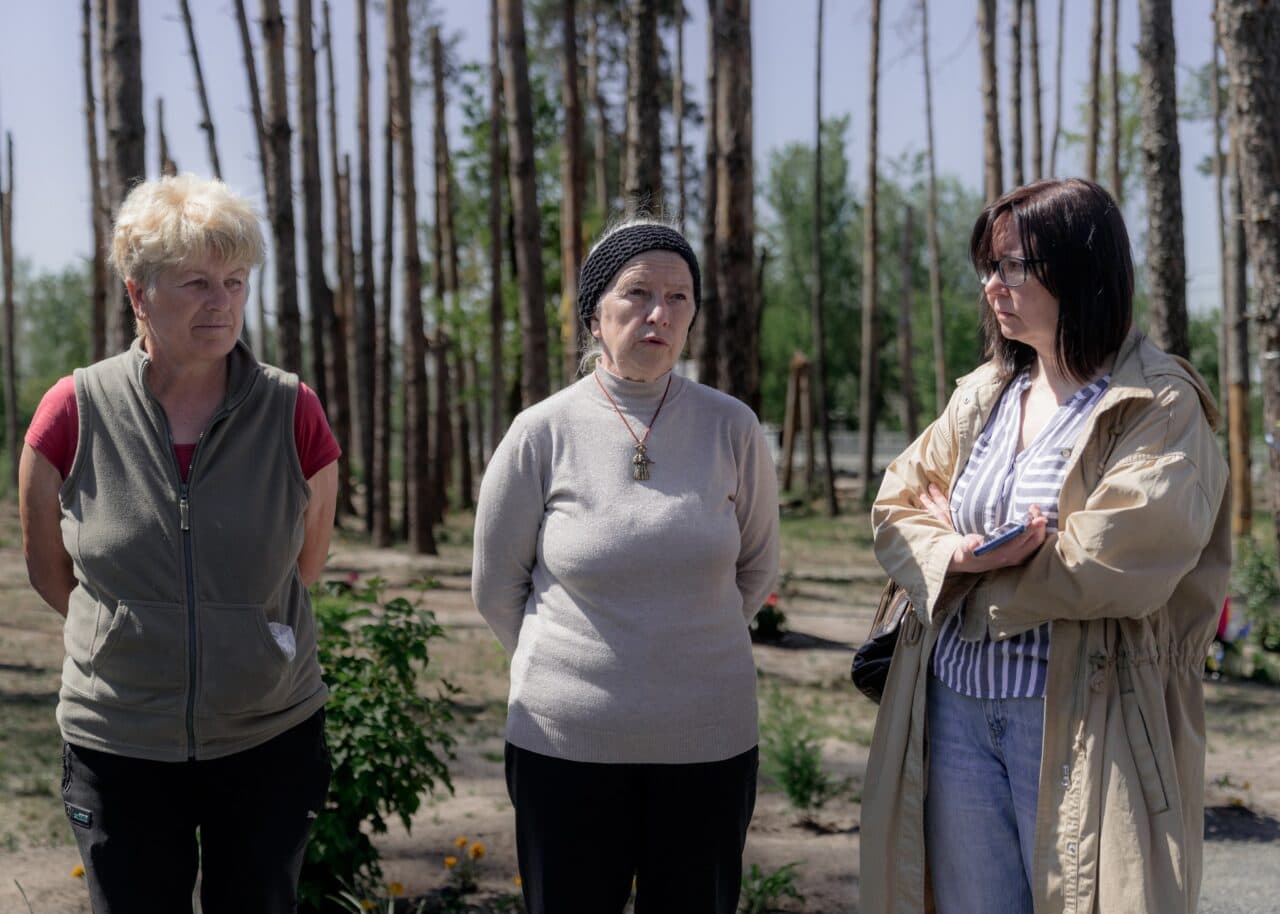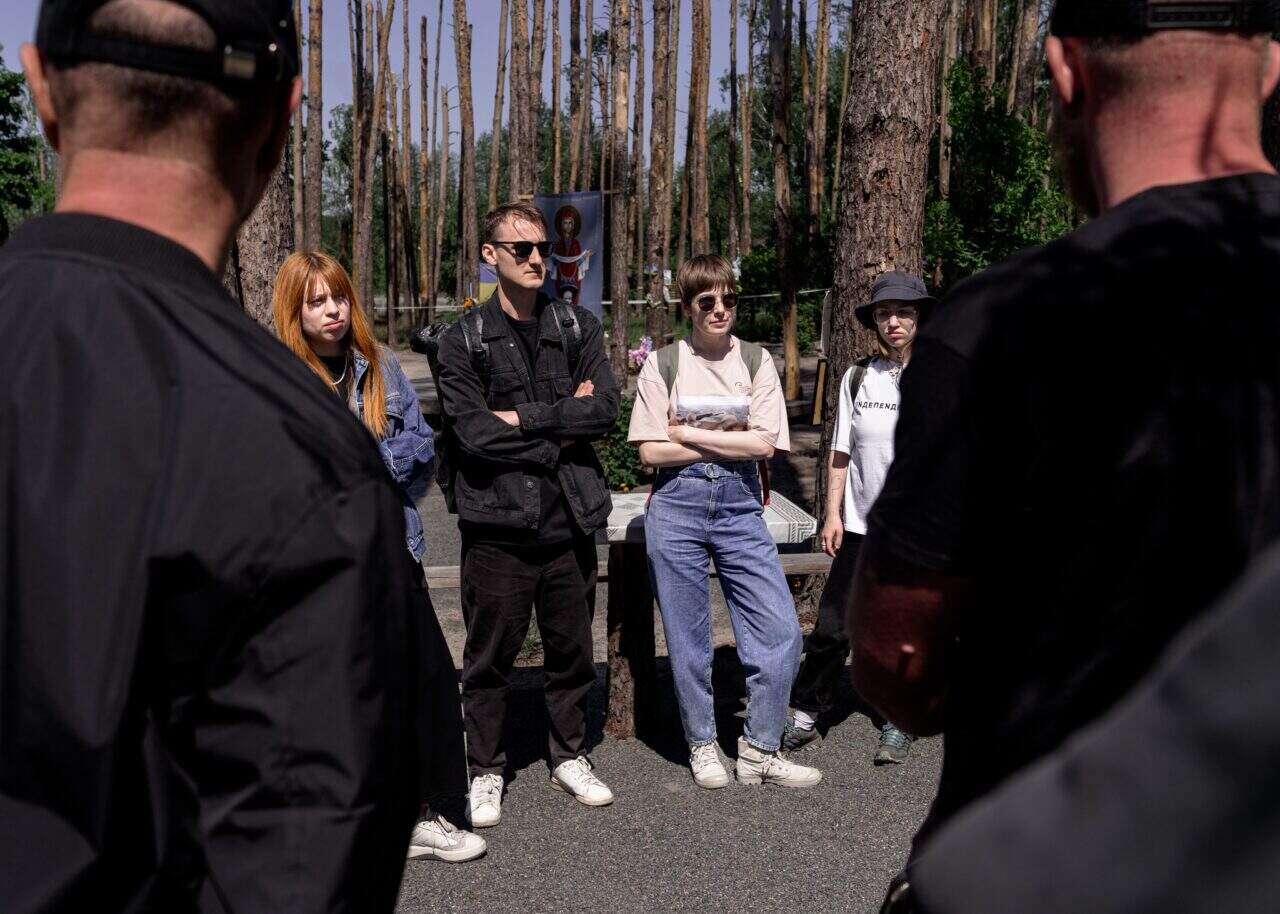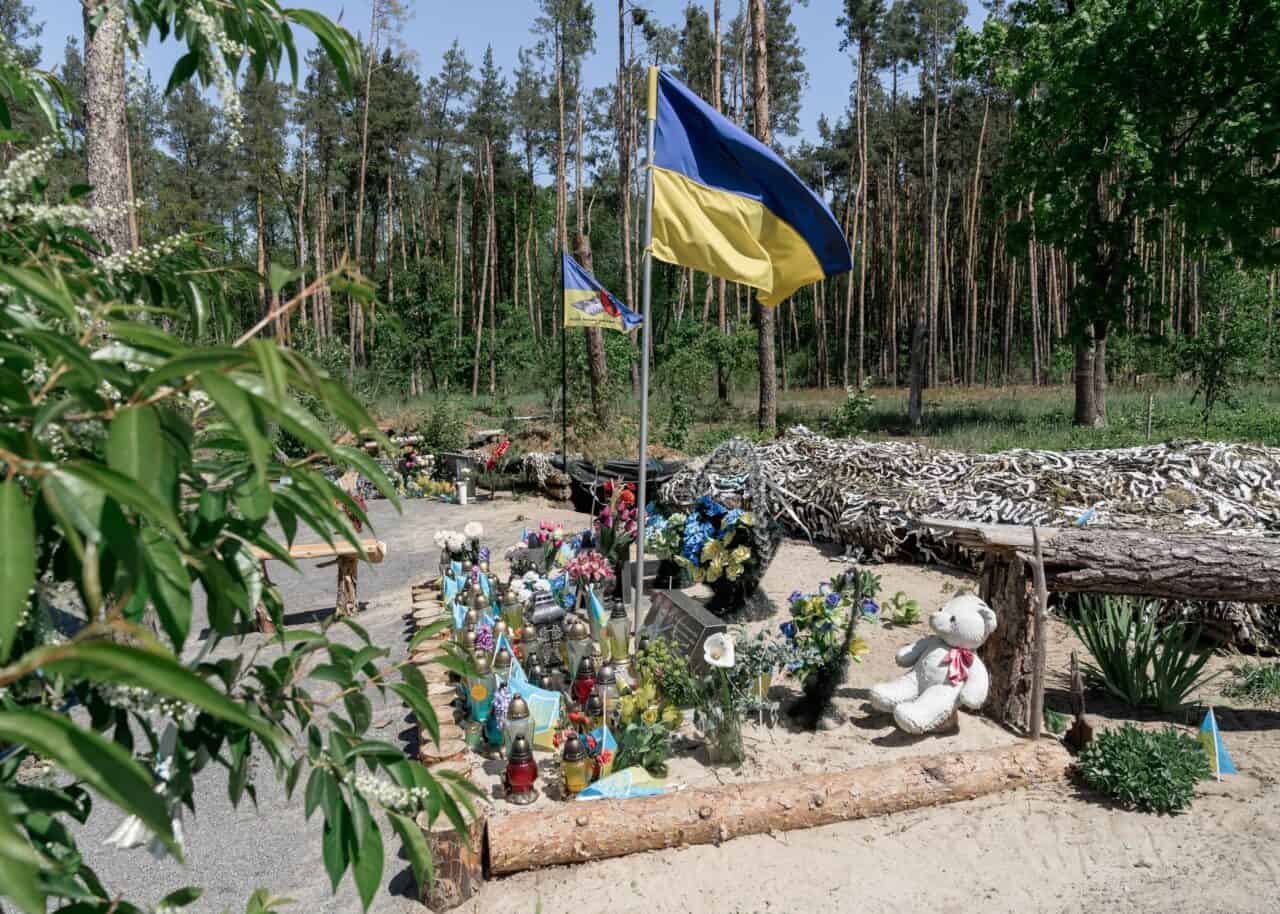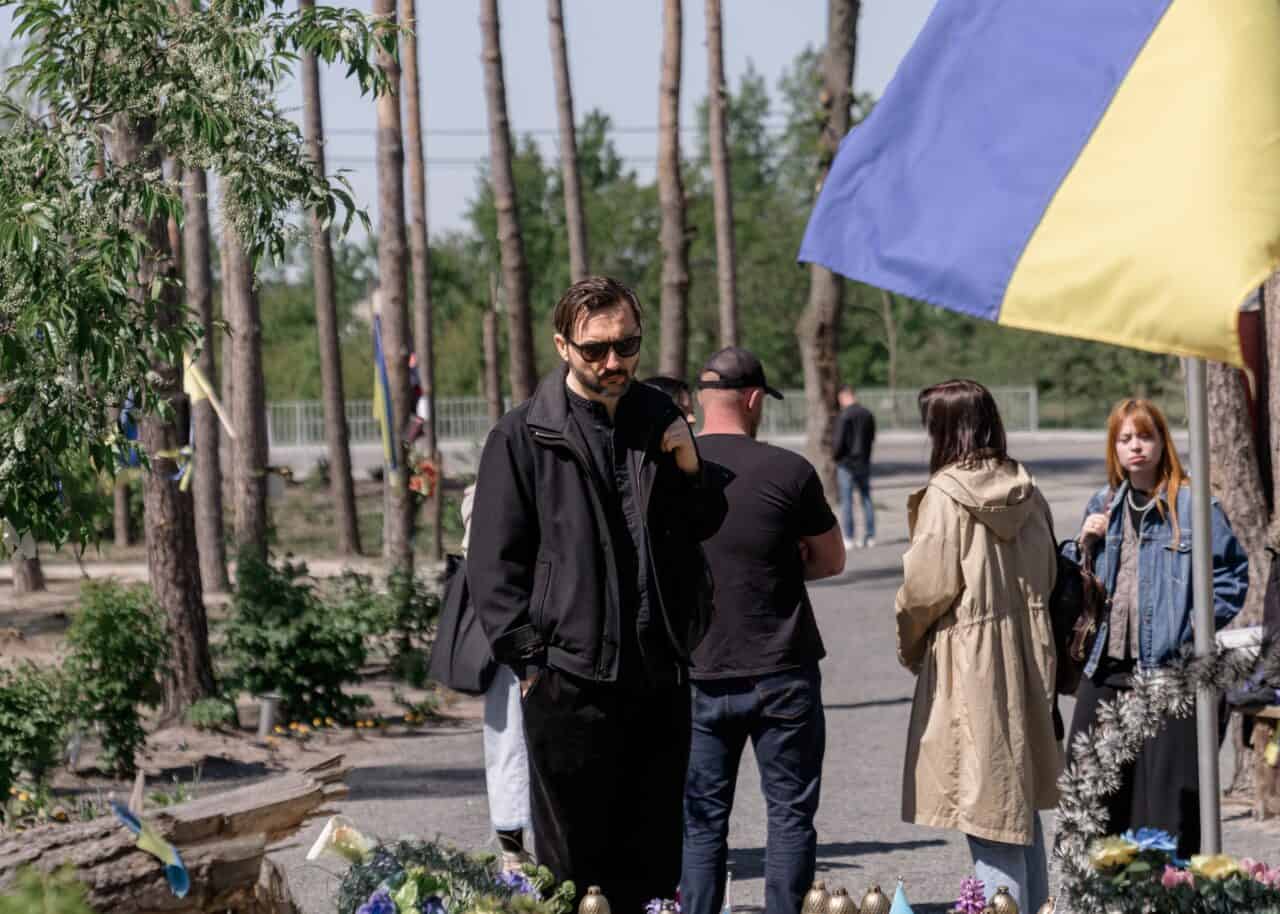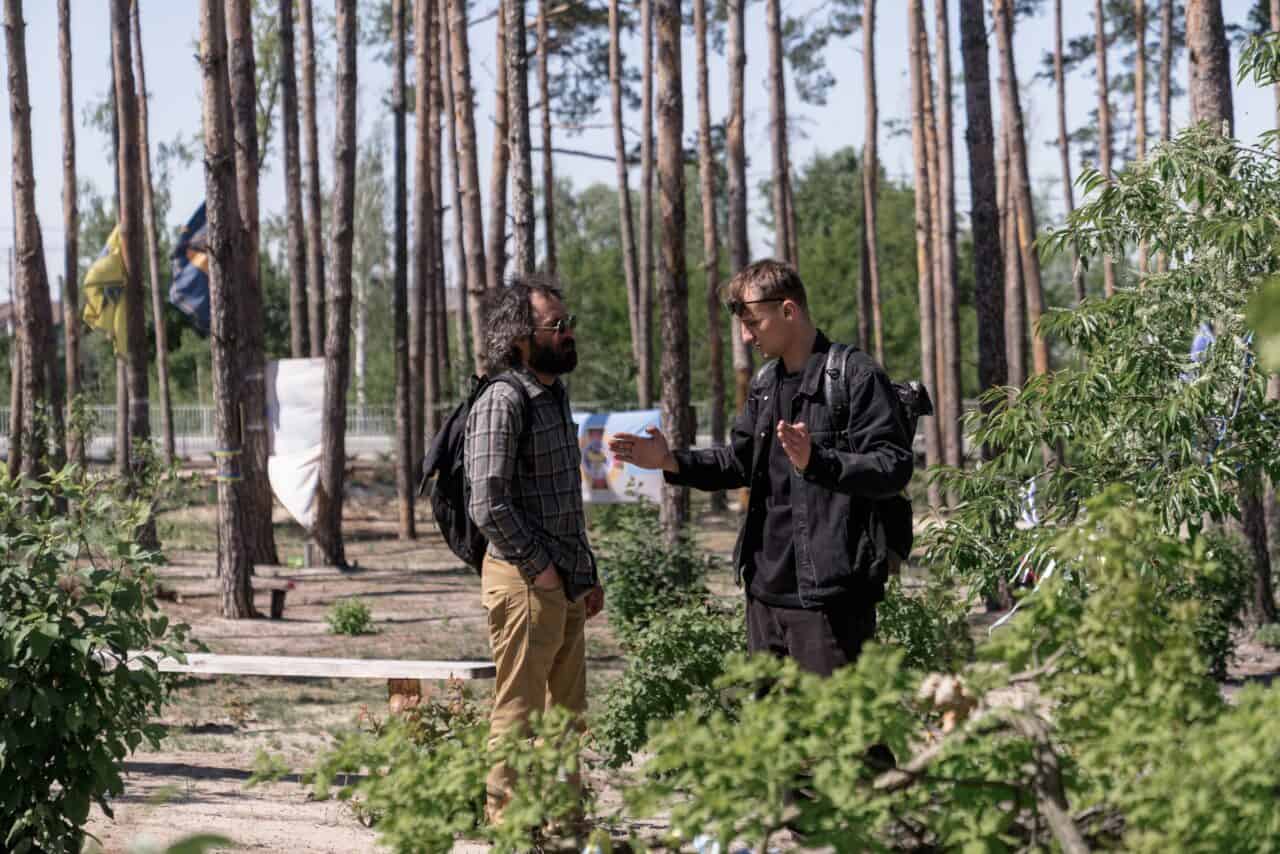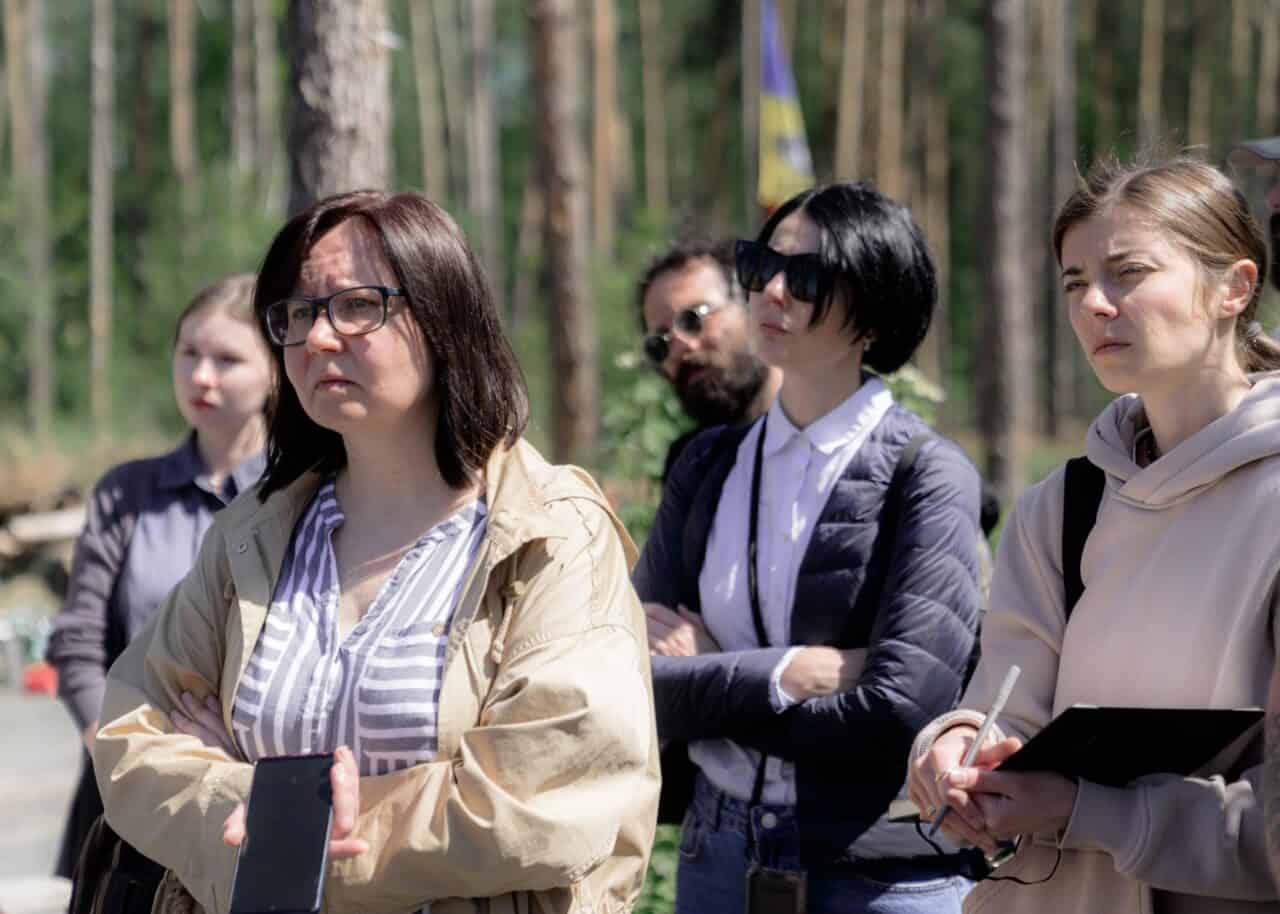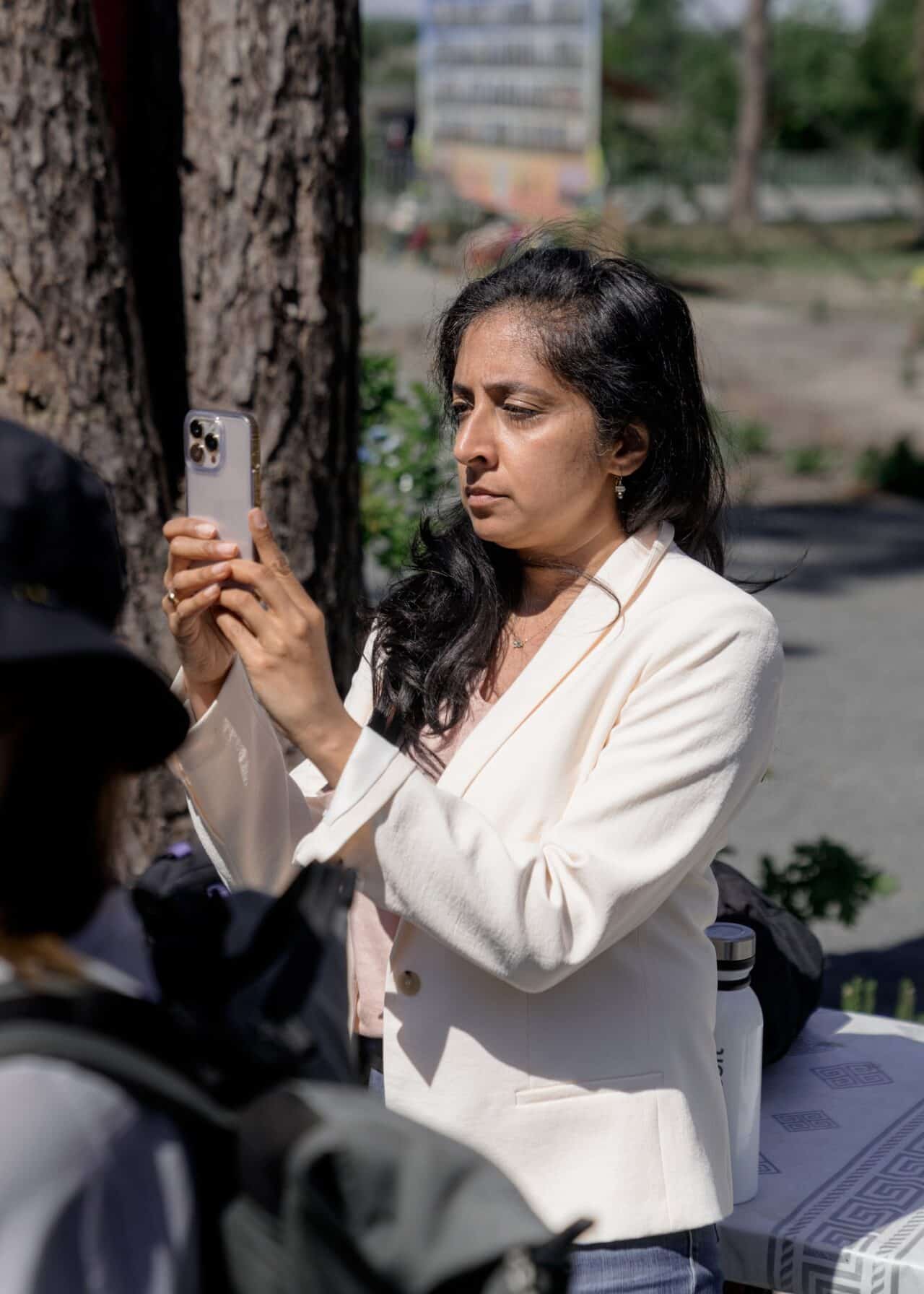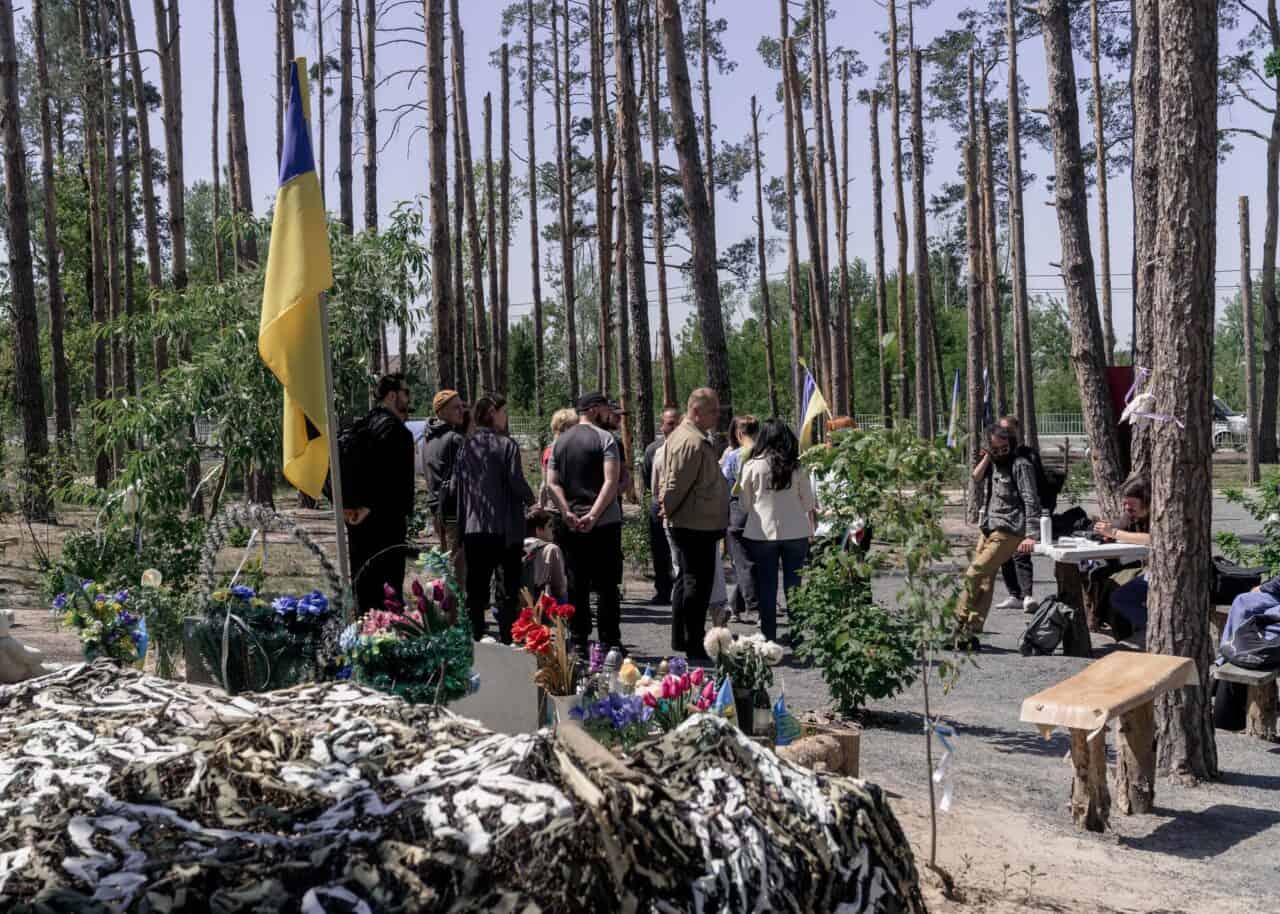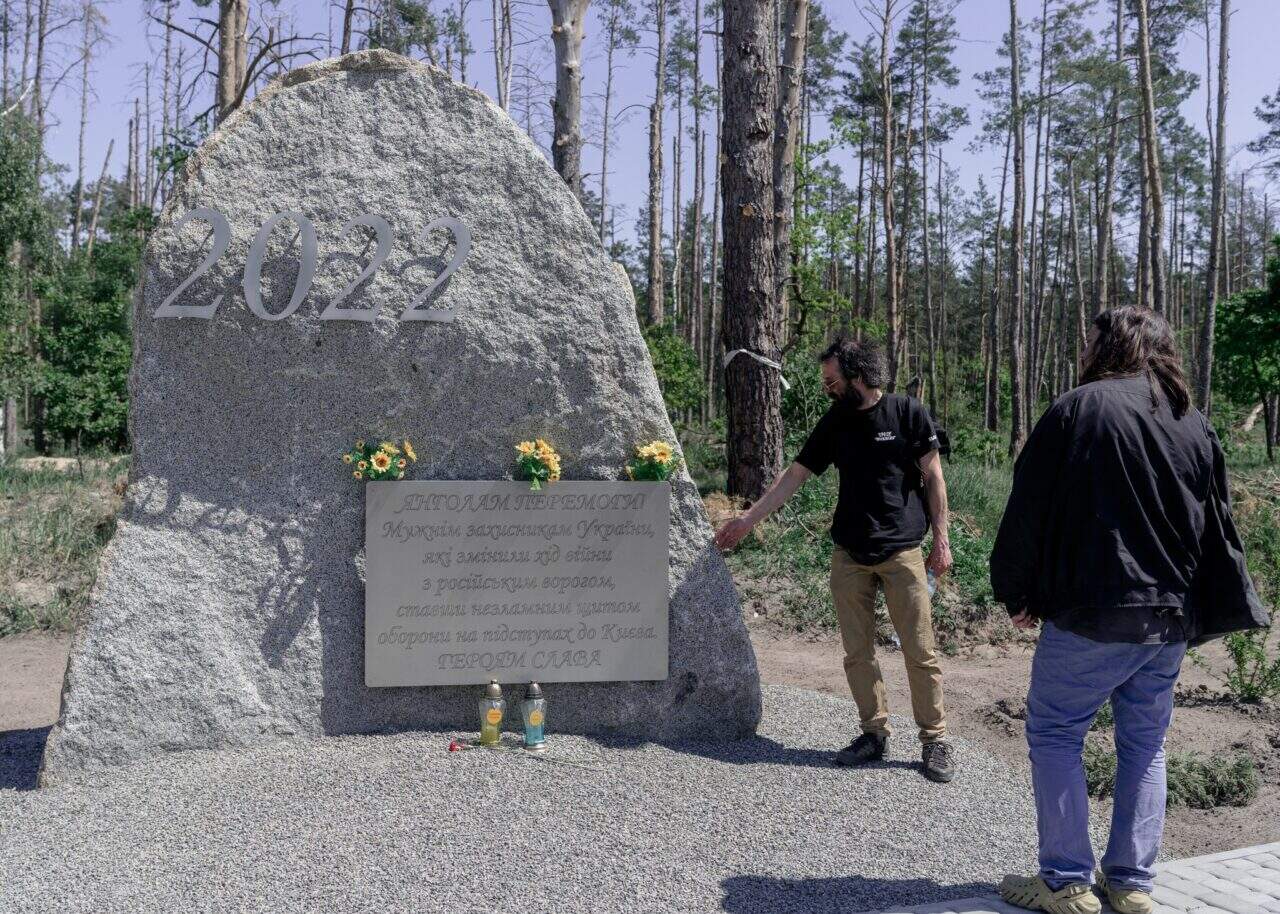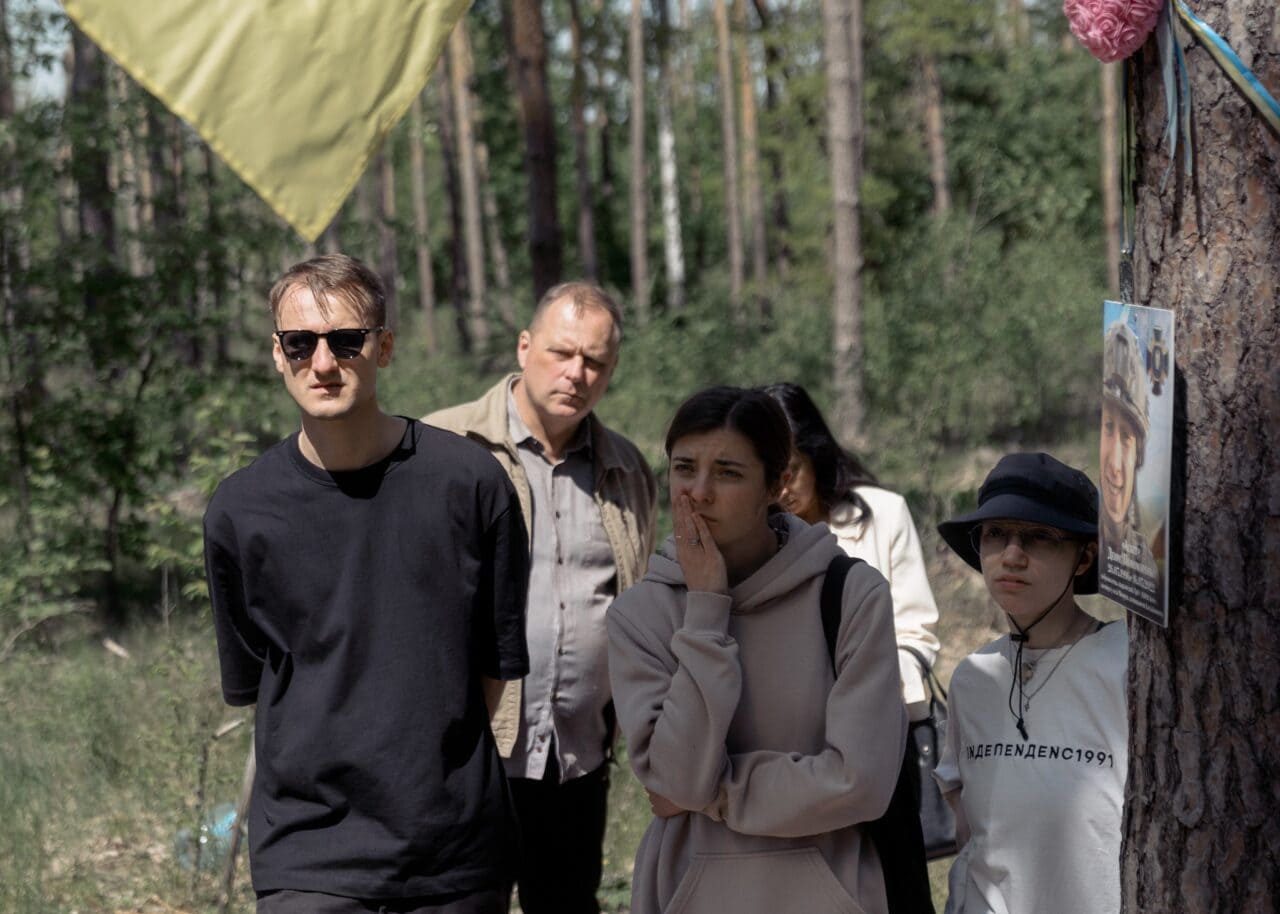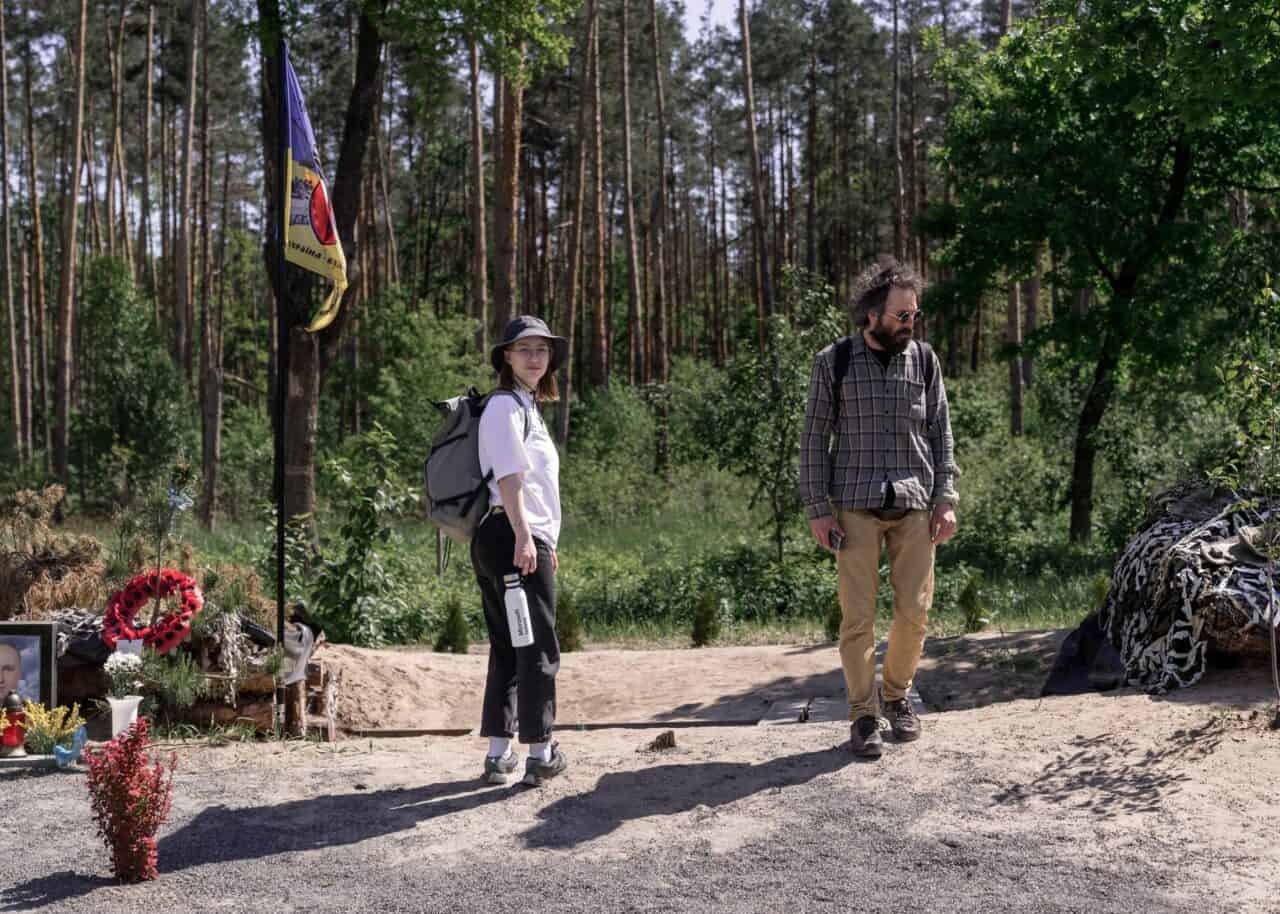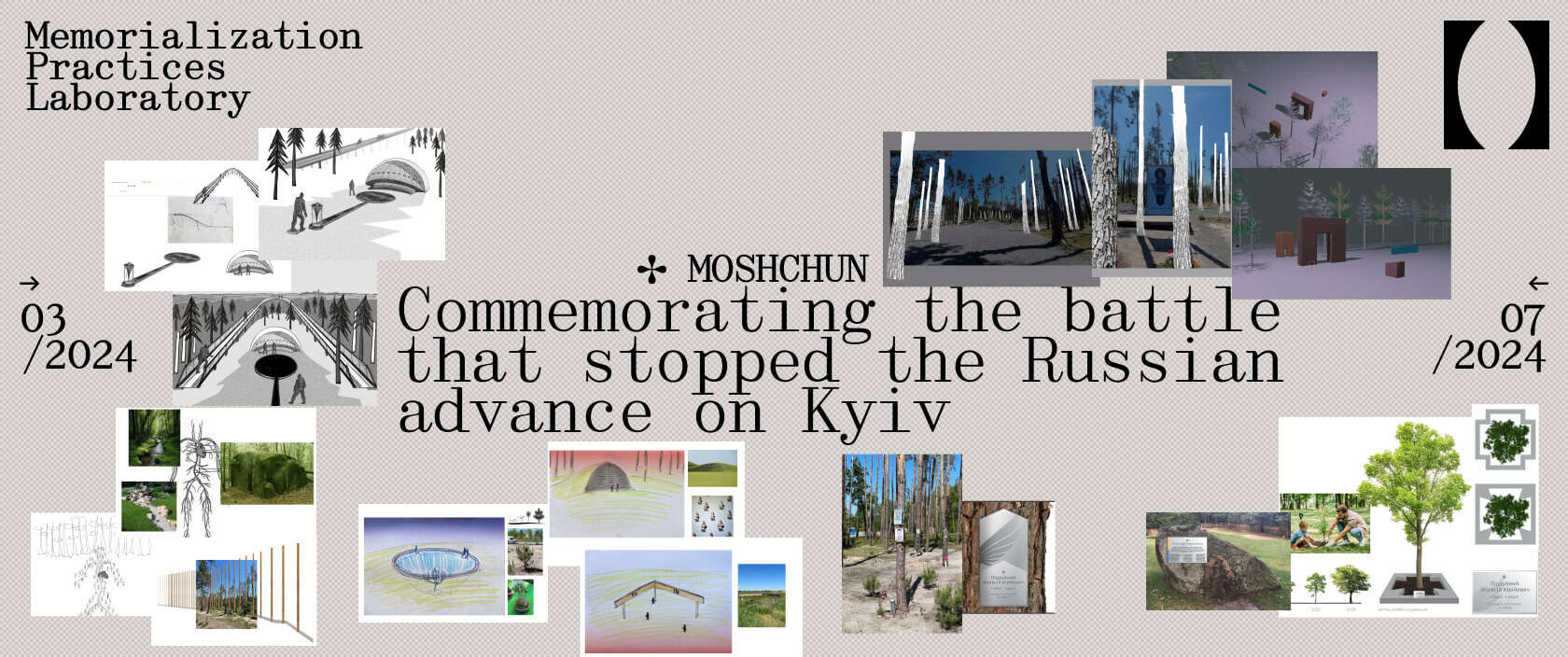

In 2024, a group of Ukrainian artists, architects, producers, and researchers came together to develop memorial projects for Moshchun—the village where the decisive battle of Kyiv’s defense happened. The effort was a part of the Memorialization Practices Lab, a learning/research initiative aiming to find a new memorialization language for the Russia-Ukrainе War.
The Lab began with the participants attending lectures and workshops that explored global approaches to collective memory. Then, they traveled to Moshchun to discuss the ongoing memorialization efforts with the local community and authorities, visit the grassroots memorials created by the families of fallen soldiers, and immerse themselves in the unique atmosphere of the pine forest that became the capital’s defense line.
Their work culminated in six concept designs. Rather than offering complete solutions, they all reflect on preserving the memory of the fallen and the ultimate price paid to defend the capital in a place marked by heavy loss and fierce resistance. In a manner, Moshchun became the gateway to Kyiv, where the Ukrainian military shut down the enemy’s advance.
Besides Moshchun, the Lab also produced memorial projects for Kharkiv, Odesa, and Chernihiv.
ABOUT THE CASE
Moshchun is a small village in the Hostomel community just north of Kyiv. In March 2022, it became the site of the decisive battles for the capital. Ukrainian forces held the line, but many defenders lost their lives there, and some of the fallen are yet to be identified. The surrounding pine forest still bears the evidence of war. The trenches, destruction, and tree damage serve as physical reminders of the scale and brutality of the battle.
After the liberation of Kyiv Oblast, grassroots memorials started popping up on the Moshchun battlefield, as people put up crosses, angel statues, and plaques to honour the fighters killed in action. Named after a fallen soldier who was an educator in civilian life, the Badri Lolashvili Foundation undertook to coordinate the memorialization efforts in Moshchun. The Foundation has already installed a memorial sign dubbed Angels of Victory. Now, it handles the search and identification of remains, contacts families, organizes commemorative events and invites locals to discuss the site’s future. Besides, Moshchun has become a routine destination for diplomatic and governmental delegations. Local authorities, the community, and the Foundation are jointly developing a comprehensive and respectful vision for the area. The site has already been cleared and partially landscaped to create a proper memorial space for all who come to honour the defenders of Kyiv.
CURATOR
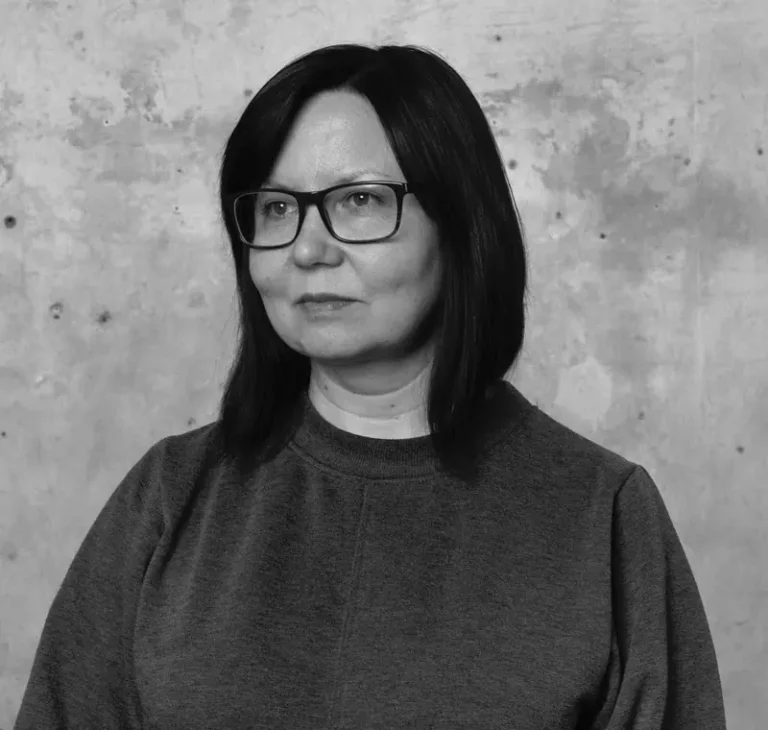
Yulia Hnat
Co-founder and Director of Ecosystem Projects and Development, Museum of Contemporary Art NGO
AUTHORS
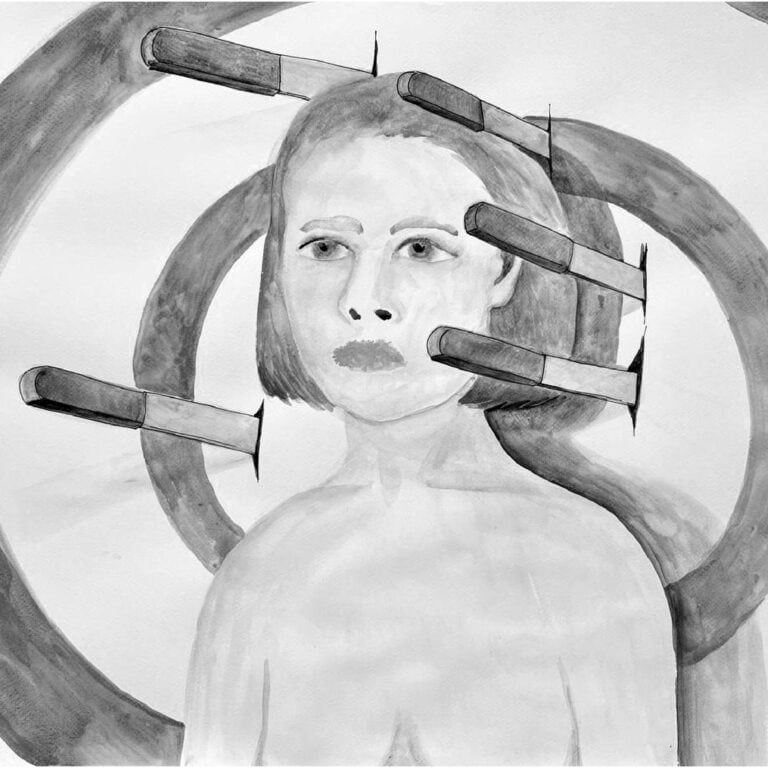
Kinder Album
Artist

Mykhailo Alekseienko
Artist
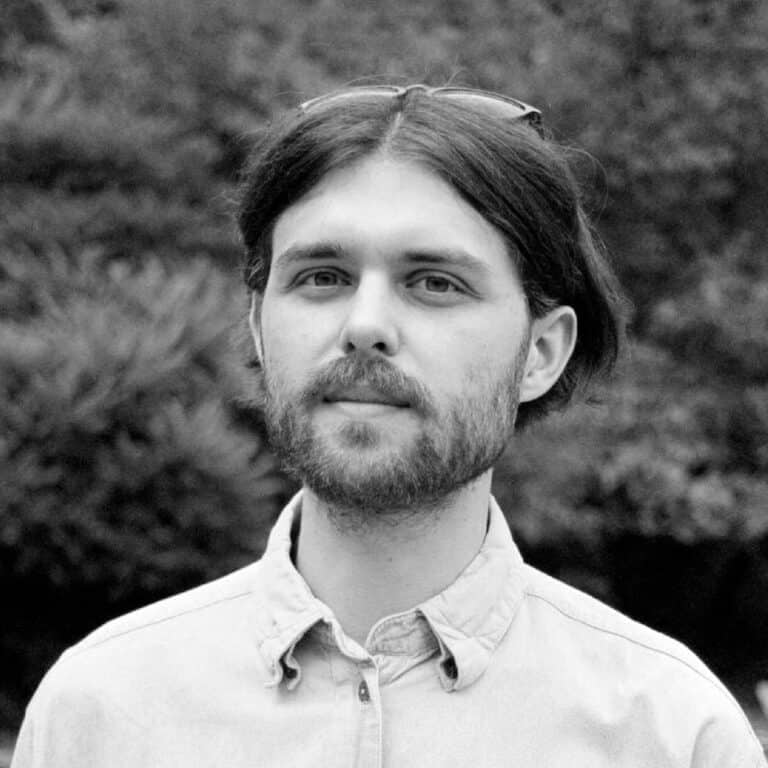
Kyrylo Huzenko
Sculptor
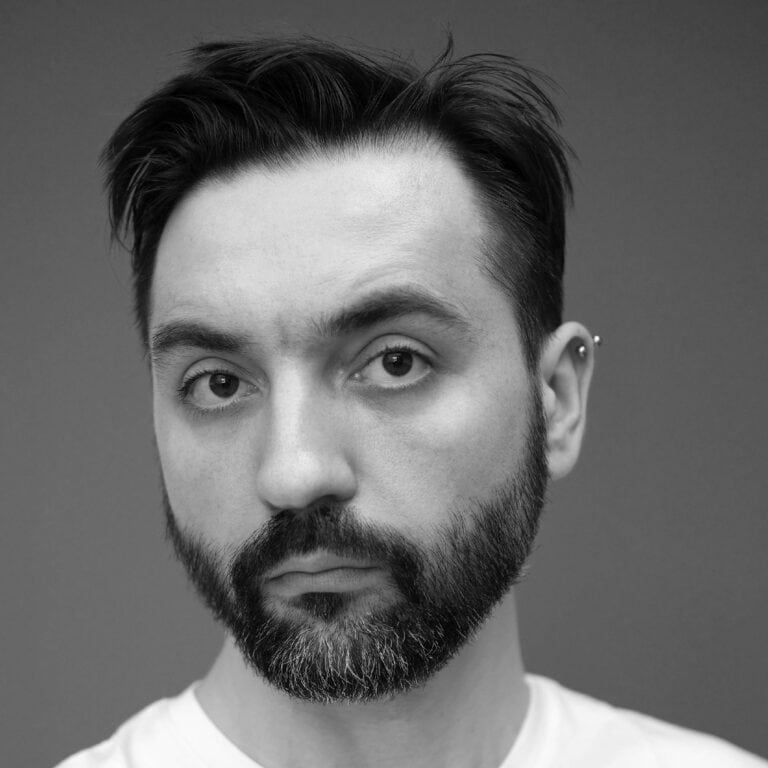
Sasha Kurmaz
Artist, Photographer
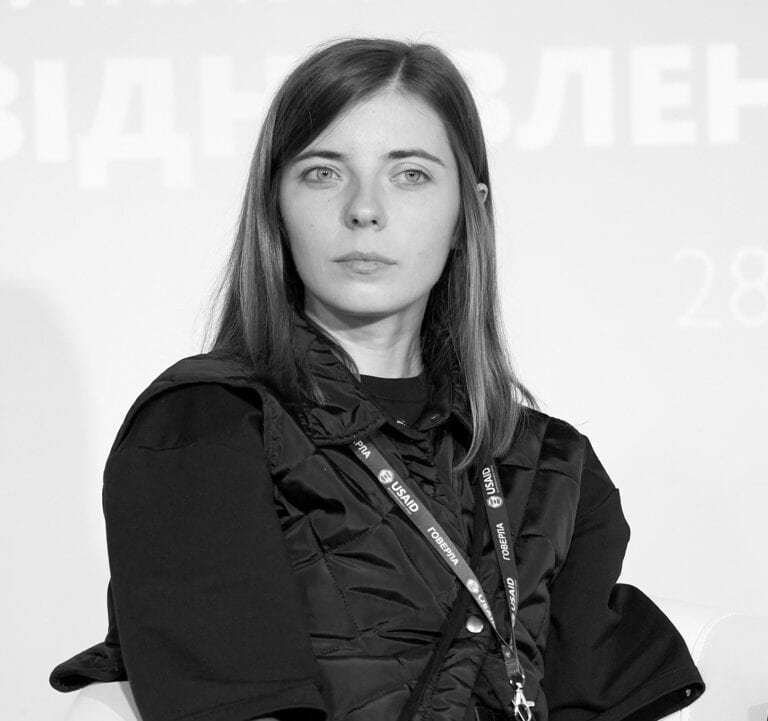
Sofiia Martyniuk
Designer

Illia Novhorodov
Artist, Sculptor
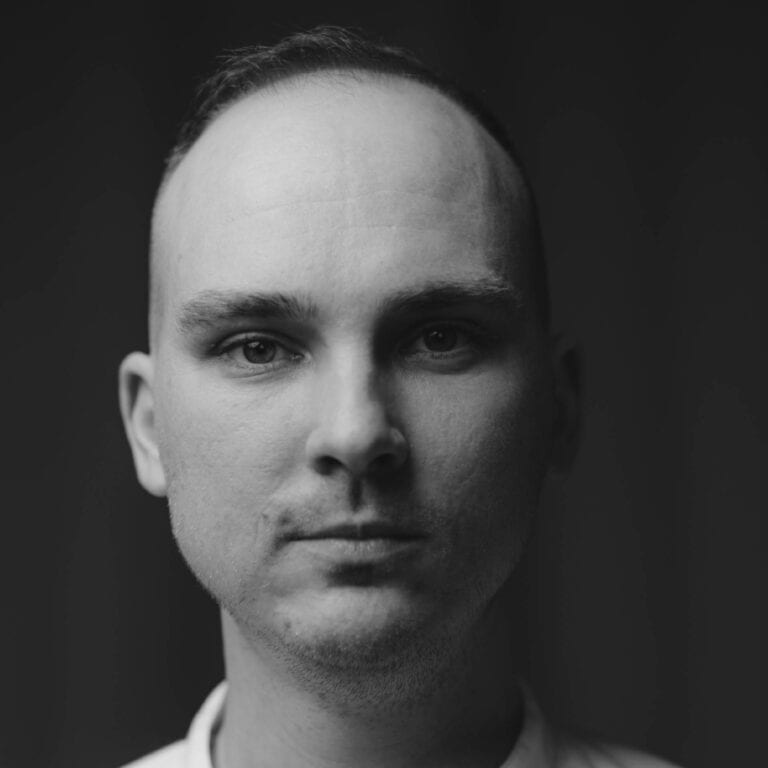
Andrii Puchinin
Architect

Ruslan Savchuk
Cultural Projects Producer
PROJECTS
KINDER ALBUM
Untitled
“My project is about how life unexpectedly springs from such a dark place as a shell crater.”
During the expedition to the Moshchun pine forest, the artist found it inspiring how pine saplings pushed through the soil amid the damaged and scorched trees. This striking contrast between devastation and new life became her project’s keystone.
Kinder Album envisions transforming a shell crater into a fountain. The water would flow down the crater’s walls and gather in its centre, where a sculpture of tender candle-like saplings emerging from a pine cone would stand—the symbols of war and rebirth combined in a single object.
Instead of a traditional memorial wall, the artist proposes making a burial mound with one vertically cut slope to accommodate the sculpted busts of fallen soldiers. Families and friends could leave items of personal significance beside them, imparting an aspect of presence to the memory of the fallen. Also, it could become a place of public gatherings and events.
The wooden compass near the Irpin River is another crucial element of her vision. Expanded with a small pavilion built on top, it could accommodate public gatherings and events. It also helps visitors comprehend Moschun’s topography and the river’s pivotal role in the spring battles. Connecting the memorial site to the river would be a hiking route tying together the forest, the river, and their history into a shared rejuvenation space.
MYKHAILO ALEKSEIENKO
Untitled
“I wanted visitors to rise above the trees, see how close Kyiv is, and get a perspective on why Moshchun is now called the capital’s shield.”
Mykhailo envisions a three-part journey for visitors. It begins with a modest entrance space with a drinking fountain and a large reflective black basin. In its water, the visitors would see their own reflection, an invitation to recognize that memory lives through those who survive. Memory is something we carry, something we become.
Next comes a small “museum” space incorporating VR materials for the visitors to experience what Moshchun looked like immediately after its liberation and get a more tangible and personal experience of the destruction’s scale.
At the heart of the concept is a raised walkway that elevates the visitors above the pine forest canopy. This bird-eye view truly demonstrates how close Kyiv is and how dense the defence lines used to be. It offers perspective and symbolism, the view of Moshchun, the capital’s shield, from high above.
Another important focal point is the white stelae built from damaged trees, which could bear the names of fallen soldiers. As the ravaged forest’s remains become silent monuments, they remind us of the lives lost and make a living landscape that endures and bears witness.
KYRYLO HUZENKO, ANDRII PUCHININ, SOFIIA MARTYNIUK
The Moshchun Outpost
“We envisaged a long wall of steel columns the enemy couldn’t breach, one column for each defender.”
The artists envision a line of towering columns made of weathering steel along the former defence line in Moshchun. Set close together, the columns form a barrier—visually evoking the sense of an unyielding wall. The authors conceived these pillars as a symbol of the Ukrainian defenders who held the line in Moshchun and stopped the enemy from entering Kyiv. Each could bear the name of an individual soldier or represent a brigade/unit that took part in the defence.
Some columns have built-in periscopes to provide a sense of the battle’s spatial logic. Through them, visitors can see Kyiv’s skyline, the Irpin River, and the surrounding terrain, realizing just how close the capital was to the frontline and what strategic importance this location held.
Others could be interactive in another way, with built-in displays showing archival footage, fighters’ interviews, or VR panoramas of just-liberated Moshchun. Walking among these steel pillars, visitors would move through a rhythm of reflection and encounter, interacting with the designated quiet zones and public gathering points integrated into the experience.
The contrast between the metal’s geometry and the natural forest creates a visceral experience, counterposing the scale of loss and the tribute to the defenders’ unyielding stand.
SASHA KURMAZ
Untitled
“I call my approach environmental. Every tree here already stands as a living symbol of the battle for Kyiv.”
Sasha Kurmaz’s project begins with the notion that the forest is already a memorial. Burnt and scarred pine trees, blast craters, trenches, and family-made plaques need no explanation. It’s not about building something new. It’s about respectfully preserving what is already there.
His design relies on minimal intervention: homogenizing the memorial signs placed by families, protecting damaged trees, and conserving the landscape. Newly planted trees could replace the fatally damaged ones. Over time, tending to the trees—touching their bark, watering the saplings and watching them grow—could become the bereaved families’ ritual of remembrance.
Instead of gargantuan monuments, Sasha envisions a safe forest trail for the visitors to explore the area in all its scarred glory, encountering trenches, craters, and family-placed plaques on the trees, each a quiet story woven into the forest’s larger fabric where collective memory and personal grief intertwine.
ILLIA NOVHORODOV
The Moshchun Gate
“I wanted to evoke the feeling of a gate that never opened to the enemy.”
Inspired by ancient fortifications, Illia Novhorodov’s project envisions a symbolic gate—a monumental form embodying the moment Moshchun stifled the enemy’s advance. The structure consists of several massive stone-like blocks brought together to suggest a gate decisively sealed shut.
At the heart of the structure is a massive stone bar partly conceived as a stripped-down fountain. The water flows slowly down its surface, echoing the Irpin River, which swelled and cut off the enemy’s advance after the dam’s destruction. This centrepiece acts as a symbolic seal on the gate, marking the point at which the Ukrainian defenders held the enemy offensive. Its surface could bear the engraved insignia and names of the brigades that defended Kyiv.
The project’s other part unfolds along a forest trail lined with natural basalt columns. Created when ancient lava flows cooled and cracked into geometric forms, these stone formations are typically hexagonal or octagonal. Their rough texture and dark grey-black colour naturally blend them with the pine forest. Each basalt pillar can serve as a marker of individual memory, bearing the name of a fallen defender. While the monumental gate at the entrance symbolizes Kyiv’s protection, the basalt trail becomes a space for personal reflection and honouring those who held the line.
RUSLAN SAVCHUK
Untitled
“With a heart-shaped stone in the centre, from which thin ‘vessels’ stretch toward young trees, this project is about grief that begets life.”
Ruslan Savchuk’s project turns the idea of pain as a revival trigger into a landscape memorial, with a large heart-shaped stone at its centre and water gently flowing outward in thin, branching streams. The streams flow toward newly planted trees, each representing a fallen soldier.
Like a circulatory system, this network of waterways nourishes the saplings, returning life to a place once devastated by war. The stone represents the weight of loss, while the water symbolizes resilience and revitalization.
Families can care for the young trees—touch their bark, water them, watch them grow—engaging in a living ritual of memory, one rooted in care rather than sorrow alone.
From above, the channels resemble human blood vessels carrying the water from the stone heart to the growing trees, giving an impression of a singular, organic whole, wherein from grief, a new beginning springs to life.
MILESTONES
Mid-March–May 2024
The Lab’s learning section
April 2024
Selection of the participants for the Lab’s hands-on practice section
17 May 2024
Research expedition to Moshchun
1 June–10 July 2024
Development of ideas, discussions with the curator, follow-up revision
20 July 2024
Presentation of project ideas
Research expedition to Moshchun, 17 May 2024
Photos by Dmytro Prutkin
ORGANIZERS
Past / Future / Art is a memory culture platform established by the Cultural Practices NGO in Odesa, Ukraine, in 2019. It focuses on memorial, research, and art projects and develops strategies for commemorating significant phenomena of Ukrainian history, initiating public discussions to engage broader audiences in working through the past.
Museum of Contemporary Art NGO (MOCA NGO) is a non-profit organization aimed at creating a new type of professional contemporary art museum institution in Ukraine, serving as a crucial element in the advancement of the art ecosystem. Founded in 2020, the organization brings together and engages artists, cultural workers, and experts who work with contemporary art in Ukraine.
The Memorialization Practices Lab is supported by the Partnership Fund for a Resilient Ukraine (PFRU), funded by aid from the governments of Canada, Estonia, Finland, Netherlands, Sweden, Switzerland, the United Kingdom, and the United States. The Fund unites the Government of Ukraine with its closest international government partners to deliver projects in primarily liberated and frontline communities that strengthen Ukraine’s resilience against Russia’s war of aggression. PFRU aims to strengthen the Ukrainian government’s capacity and resilience to deliver essential support to local communities in collaboration with civil society, media, and the private sector.
